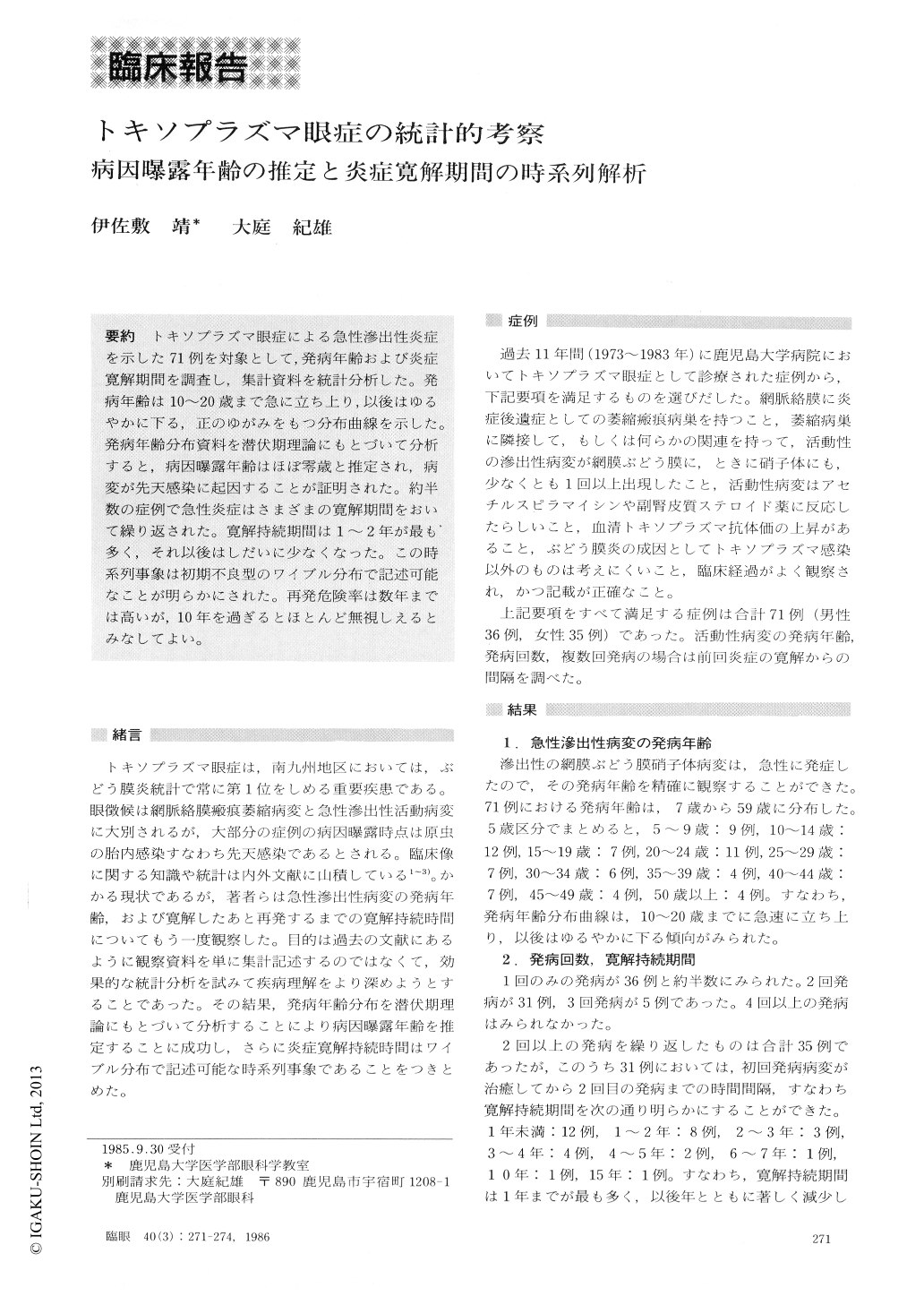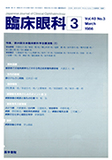Japanese
English
- 有料閲覧
- Abstract 文献概要
- 1ページ目 Look Inside
トキソプラズマ眼症による急性滲出性炎症を示した71例を対象として,発病年齢および炎症寛解期間を調査し,集計資料を統計分析した.発病年齢は10〜20歳まで急に立ち上り,以後はゆるやかに下る,正のゆがみをもつ分布曲線を示した.発病年齢分布資料を潜伏期理論にもとづいて分析すると,病因曝露年齢はほぼ零歳と推定され,病変が先天感染に起因することが証明された.約半数の症例で急性炎症はさまざまの寛解期間をおいて繰り返された.寛解持続期間は1〜2年が最も多く,それ以後はしだいに少なくなった.この時系列事象は初期不良型のワイブル分布で記述可能なことが明らかにされた.再発危険率は数年までは高いが,10年を過ぎるとほとんど無視しえるとみなしてよい.
We reviewed a consecutive series of 71 cases with acute exudative retinochoroiditis due to toxoplamic infection. We paid particular attention to the age of onset of the disease and the duration of remission. The initial acute episode of the disease occurred from the second decade of life on, to reach the maximum preva-lence in the third decade and to gradually decrease in later ages.
We analyzed the distribution of the age at the onset of the disease according to the theory on the incubation period of infectious diseases. The incubation period of ocular toxoplasmosis was estimated to be around zero year of age, which provides an additional evidence that congenital infection is responsible for the exudative retinochoroiditis occurring in adults.
About one-half of the patients showed recurrences after variable periods, usually of one to two years, of remission. The cumulative frequency of the duration of remission was found to fit well into the initial failure type of Weibull distribution. Thus, the risk of recur-rence could be predicted as a function of elapsed time after the initial episode of the disease. The risk remains very high during the initial few years. After ten years, the risk may be negligibly low.
Rinsho Ganka (Jpn J Clin Ophthalmol) 40(3) : 271-274, 1986

Copyright © 1986, Igaku-Shoin Ltd. All rights reserved.


